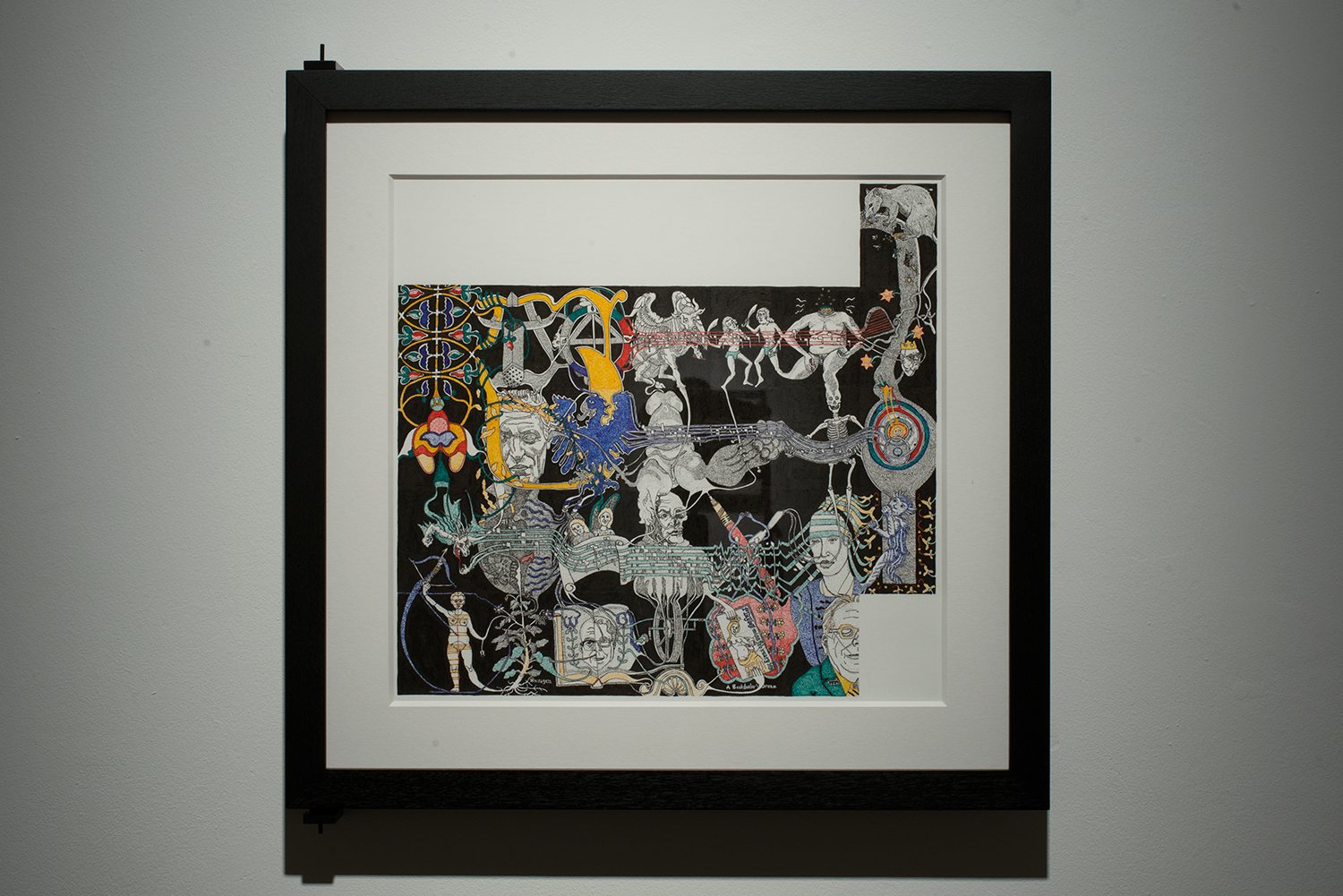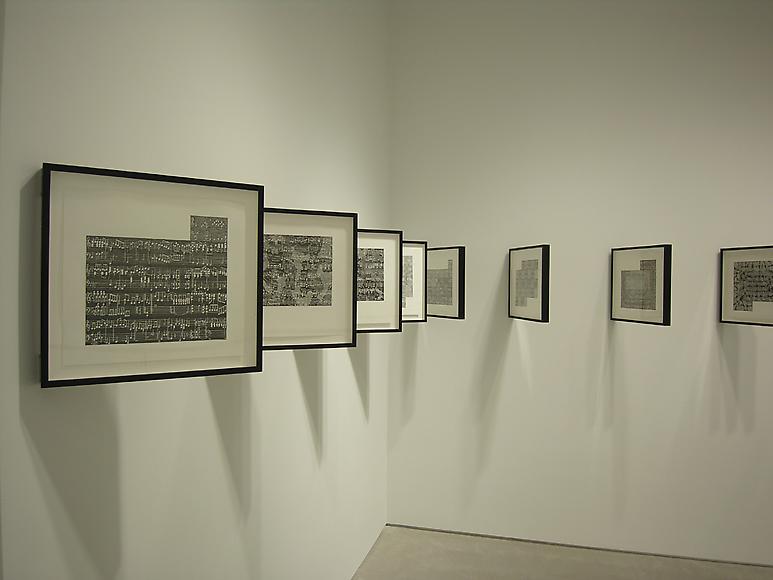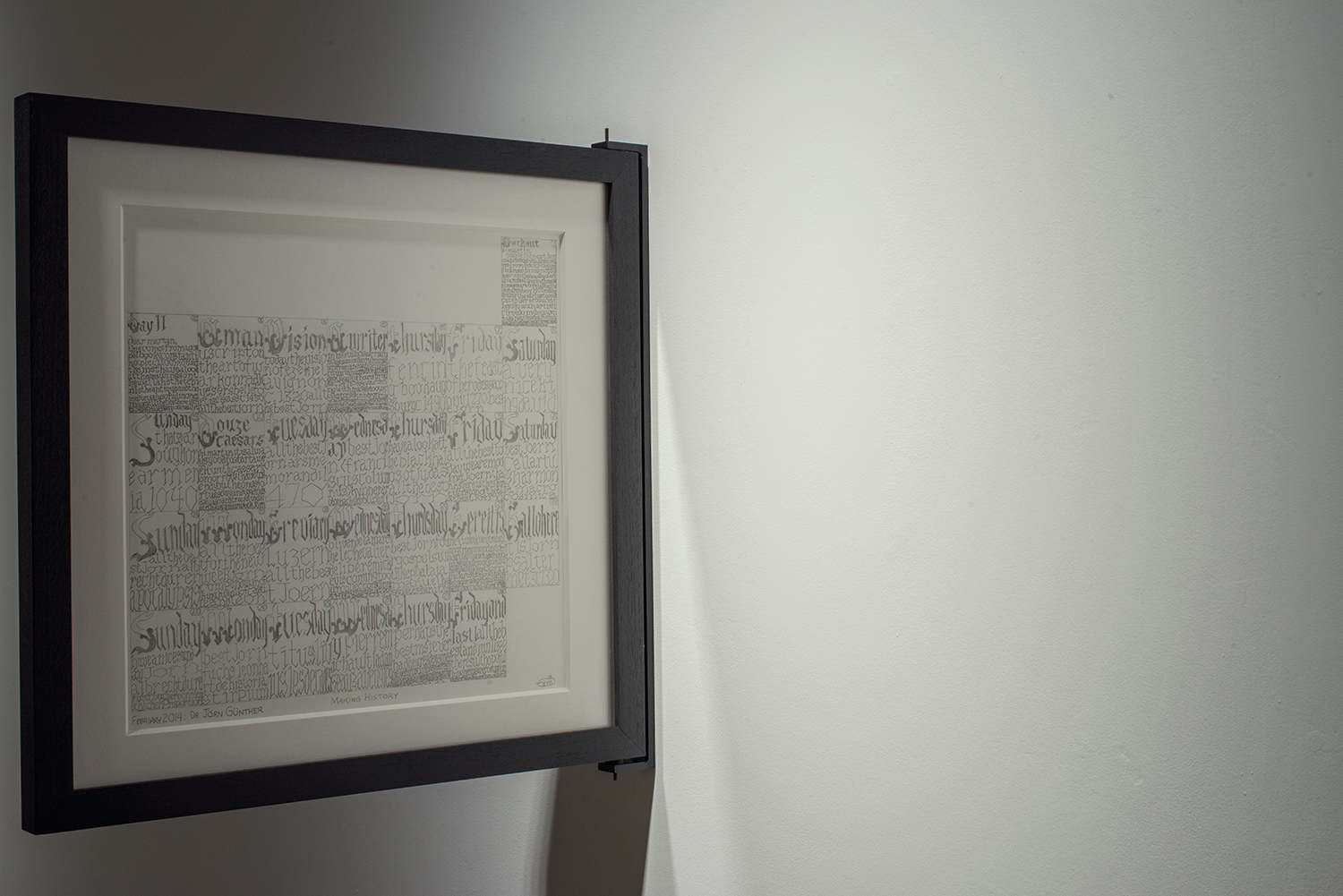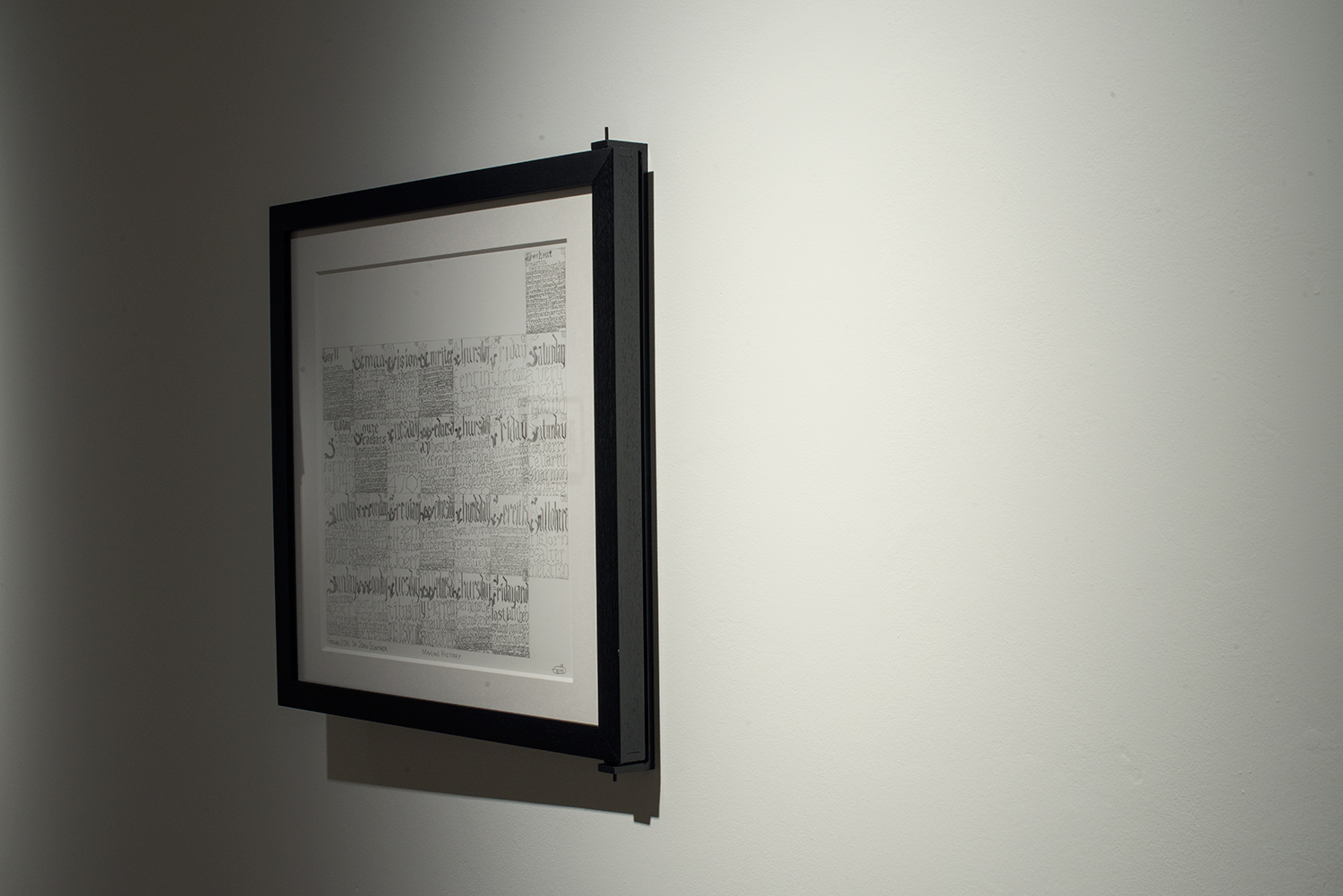Martin Wilner: The Case Histories
Freud Museum London
23 November 2016 - 19 February 2017
The Case Histories are the latest iteration of Wilner’s ongoing Making History project begun in 2002. Wilner, in the first decade of this process, rendered daily drawings based upon events in the world of interest to him. Over the course of each month elements of representation, portraiture, caricature, cartography, typography, micrography, and musical composition coalesce into the resulting work.
Beginning in 2012 he began to bring the basic elements of psychoanalysis into the work process by inviting subjects to sit in his place and send him daily correspondence for month-long periods. As Wilner is also a psychiatrist and scholar in psychoanalysis, he is uniquely suited to this unusual task. Together with pen and paper, a psychoanalytic examination of the relationship that develops in the course of each intensive month-long correspondence, directs and helps produce the resulting work.
The Case Histories, includes the first year of this project, representing a refinement of Wilner’s two decades-long observational and parameter-driven work practice. Subjects in these works include the composer John Zorn, filmmaker Darren Aronofsky, architects Tod Williams and Billie Tsien, and his own former psychoanalyst, among many other fascinating individuals. Also presented are relevant examples of works from his other ongoing projects, Journal of Evidence Weekly and Game Pieces, giving context to the organic evolution of his psychoanalytic drawing practice.
In Journal of Evidence Weekly, Wilner works within the observational constraints of the New York City subway system to create an ongoing series of volumes of drawings, primarily in an accordion fold format to record and examine the ever-unfolding narrative of his daily journeys.
In Game Pieces, he deploys the structures and parameters of games and rule-bound compositional structures to create works that mine the interstices of chance and choice, conscious and unconscious. In Phrenology, the compositional structure of a pseudoscience that purported to map the characteristics of mind becomes a game of self-analysis in the artist’s hands. Despite its being debunked, the notion that the mind could be functionally mapped anticipated Freud’s own topographical model of the mind and brain mapping using fMRI and other current technologies in neuroscience today. As such, presenting Phrenology in Freud’s study creates an interesting conversation between seemingly archaic ideas of the past filtering through Freud’s own contemplations on these matters into the present.



